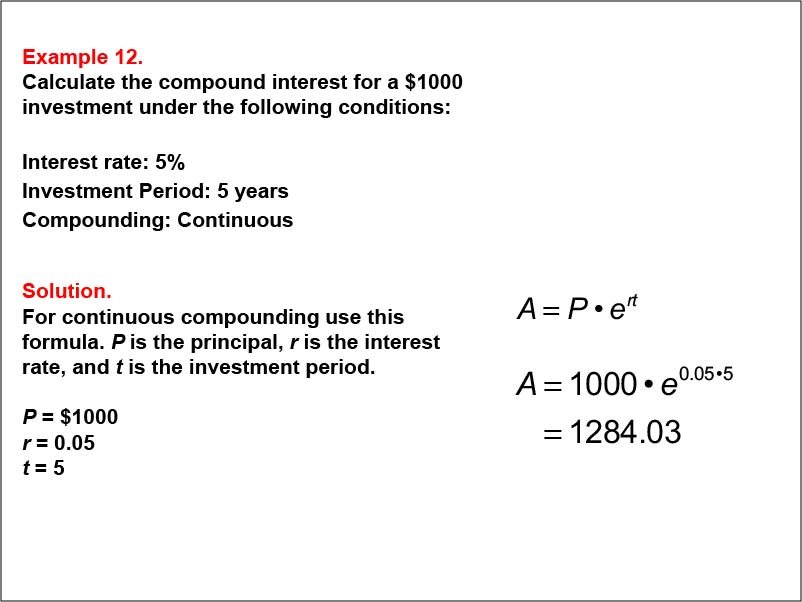
Display Title
Math Example--Math of Money--Compound Interest: Example 12
Display Title
Math Example--Math of Money--Compound Interest: Example 12

Topic
Math of Money
Description
This example calculates compound interest for a $1000 investment at a 5% interest rate over 5 years, compounded continuously. Using the formula A = Pert, where P = 1000, r = 0.05, and t = 5, the final amount is $1284.03.
Compound interest is a fundamental concept in finance, illustrating how investments grow exponentially over time. This example highlights continuous compounding, which shows the impact of applying interest at every possible moment. Understanding these differences helps students apply compound interest in real-world financial scenarios.
Multiple examples are essential for students to fully grasp compound interest. They provide opportunities to compare outcomes and understand how changes in compounding frequency affect results, enhancing analytical skills.
Teacher Script: "Let's explore continuous compounding with a $1000 investment at a 5% rate for 5 years. Notice how this affects your total return compared to other compounding frequencies."
For a complete collection of math examples related to Compound Interest click on this link: Math Examples: Compound Interest Collection.
| Common Core Standards | CCSS.MATH.CONTENT.7.RP.A.3, CCSS.MATH.CONTENT.HSF.LE.A.1, CCSS.MATH.CONTENT.HSF.IF.C.8.B |
|---|---|
| Grade Range | 8 - 12 |
| Curriculum Nodes |
Algebra • Exponential and Logarithmic Functions • Compound Interest |
| Copyright Year | 2013 |
| Keywords | interest, compound interest, math of money |